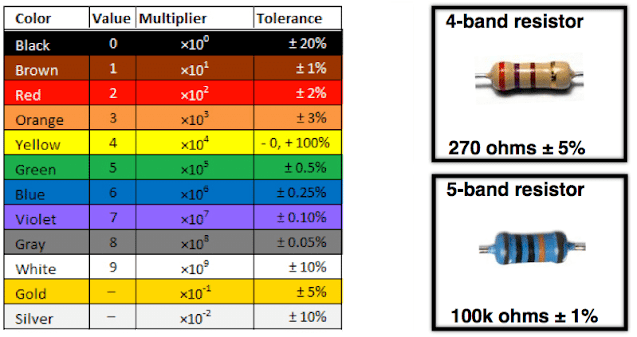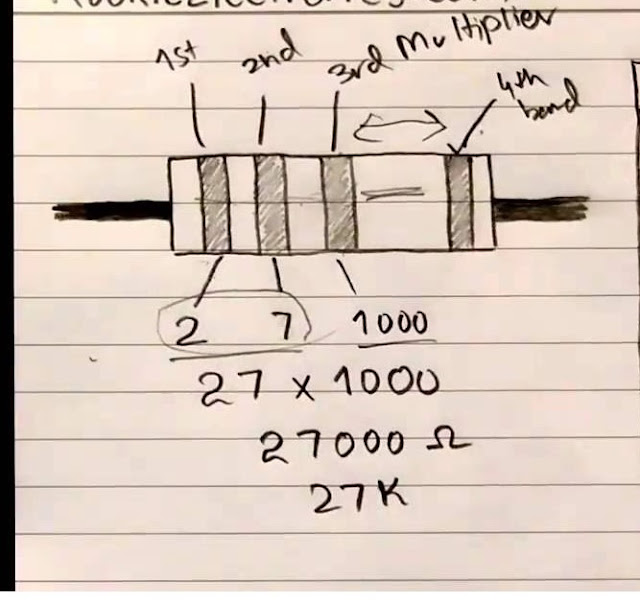Resistor and Resistance Calculation with Color Code
A
resistor is an electrical component that limits or regulates the flow of
electrical current in an electronic circuit.
Resistors can also be used to provide a specific voltage for an active device such as a transistor.
All other factors being
equal, in a direct-current (DC) circuit, the current through a resistor is
inversely proportional to its resistance, and directly proportional to the voltage across
it. This is the well-known Ohm's Law. In alternating-current (AC) circuits, this rule also applies as long as the resistor
does not contain inductance or capacitance.
Resistors have standard colors for identification of the
resistance value. In order, the colors are: black, brown, red, orange, yellow,
green, blue, violet, gray, and white. Reading resistors is a very simple
procedure if you use the chart and formula below.
Hold the resistor with the
gold or silver band to the right and read the resistor from the left to the
right.
Resistance = (1st Digit x
10 + 2nd Digit) x Multiplier
Example: This resistor,
read from left to right, has the colored bands of RED, VIOLET, YELLOW, SILVER.
Using
the formula and chart above, the resistance would be:
R
= 1st Digit x 10 + 2nd Digit) x Multiplier
R = (RED X 10 + VIOLET) x YELLOW
R = (2 x 10 + 7) x 10,000
R = 27 x 10,000
R = 270,000 ohm (270 K ohms)
R = (RED X 10 + VIOLET) x YELLOW
R = (2 x 10 + 7) x 10,000
R = 27 x 10,000
R = 270,000 ohm (270 K ohms)
Since
the final band is silver, the tolerance is 10%.










really informative
ReplyDeletewow keep writing bro
ReplyDeleterealy informaaative
ReplyDelete